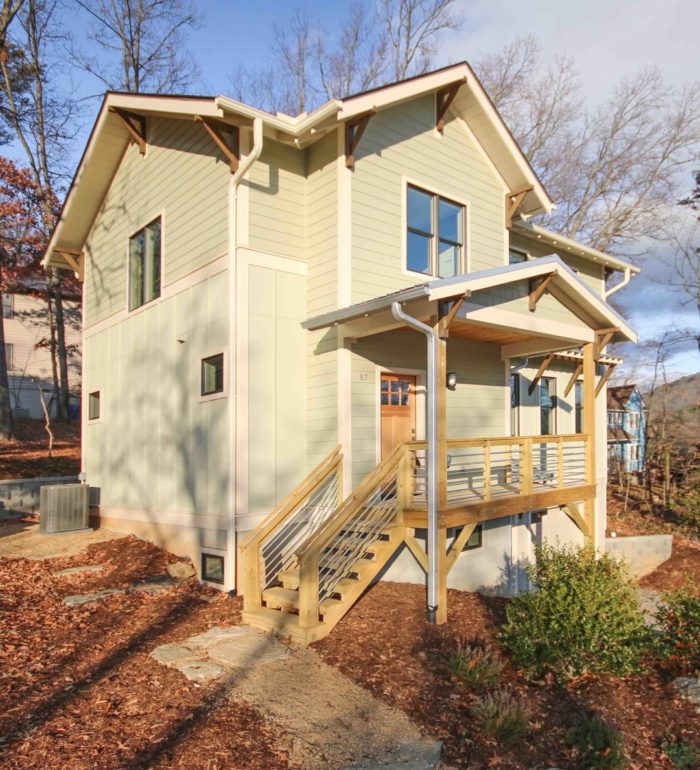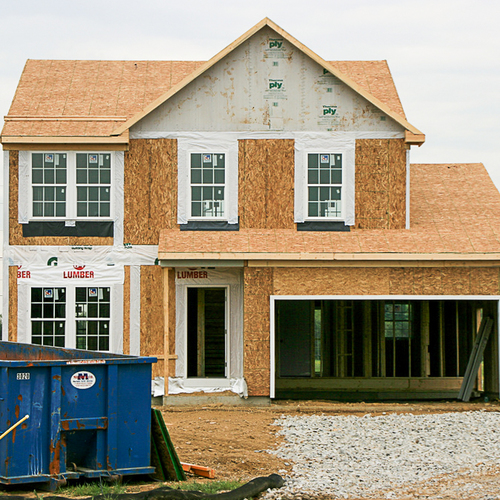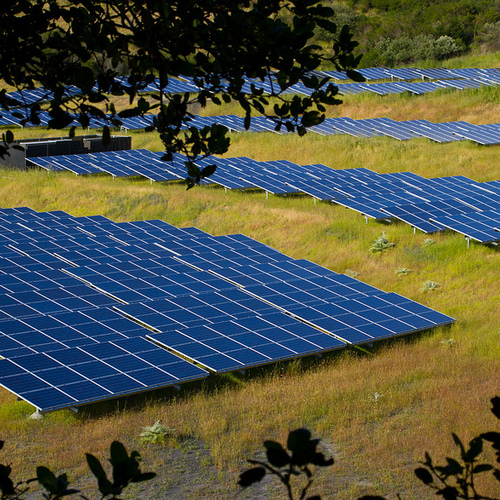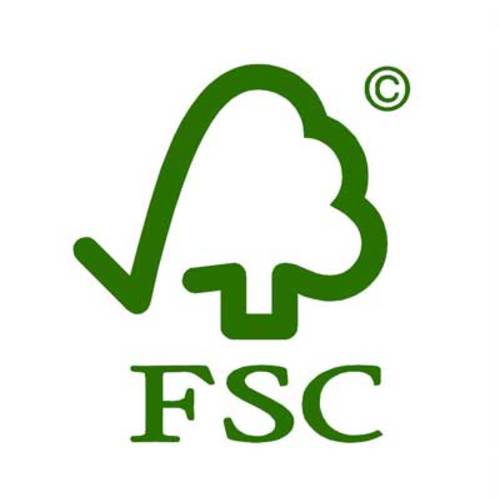
Image Credit: WNC Green Building Council
An organization promoting green building in North Carolina that started 15 years ago with a handful of building professionals is now celebrating the certification of the 1,000th home under its Green Built North Carolina program.
A 2,000-square-foot three-bedroom house at 87 Fenner Avenue in Asheville pushed the Western North Carolina Green Building Council past the mark in April.
Maggie Leslie, the organization’s executive director, told the Mountain Xpress that builders and buyers alike have warmed up to the idea of sustainable building.
“When I began working in the industry in 2003,” she told the Xpress, “there were few builders that knew how to build high-performance green homes, and just as few people asking for them. But now, 230 contractors have built at least one project, and it’s no longer difficult to find a subcontractor to install insulation or a heating and cooling system to our standards.”
Most of the certified houses are near Asheville, a city of about 80,000, where 50 percent of the permits pulled for new construction last year were for green homes, Leslie said by telephone.
“Theoretically, we serve all of the state of North Carolina, but we’re focused in western North Carolina,” she said. “Of those 1,000 homes, probably 95 percent are in Buncombe County, so when you look at that it’s a high number. If you look at all of western North Carolina, it’s not a very high number. We’d like to be doing a lot more out of the county.”
Asheville’s location in the state’s mountainous west has long been a draw for tourists as well as permanent residents, and probably has contributed to the city’s better-than-average commitment to green building.
“We do live in a community surrounded by beautiful mountains,” Leslie said. “People come here because of the beauty, and a lot of people have an environmental commitment and want to protect the environment. We definitely have a strong number of people who believe in our cause.”
Similar to LEED for Homes
Like the LEED for Homes program administered by the U.S. Green Building Council, Green Built North Carolina has four levels of compliance: certified, silver, gold, and platinum. The two programs, however, are separate and have checklists that are slightly different.
“It is just designed to be a more cost-effective, builder-friendly program that’s really focused on our local market and our local needs,” Leslie said.
Certification starts with a list of prerequisites requiring, among other things, a minimum HERS index of 85, a blower door test, sealed duct work with maximum leakage rates, HVAC equipment sized with Manual J calculations, whole-house mechanical ventilation, and either sealed-combustion or power-vented gas appliances.
From there, builders gather points in a number of separate areas: site opportunities, water opportunities, building envelope, comfort systems, appliances, lighting and renewables, indoor air quality, and materials. There also are a number of bonus opportunities.
The number of points determines the level of certification.
On sale for $415,000
The house on Fenner Avenue was listed at $415,000 and, according to the Mountain Xpress, had a buyer ready to close in late April. At a tick over $200 a square foot, the house was about average in cost for a new custom home in Asheville, in part because land prices there are relatively high.
With a silver-level certification, the house came with a 16 SEER heat pump, a tankless water heater, R-19 walls, and a roof deck sealed with R-26 worth of spray foam insulation. The slab is insulated to R-11.
Leslie said that certified houses cover a wide range of styles and prices. About 30 percent of them, she added, have been built as affordable housing.
Weekly Newsletter
Get building science and energy efficiency advice, plus special offers, in your inbox.















4 Comments
Notable?
$200. per square foot, R19 walls, R26 roof deck. No offense meant to anyone, but this is below the standards for a typical poorly built house in Maine.I realize that North Carolina is a much gentler climate, but what is notable here?
Response to Kevin Zorski
Kevin,
I must say that I share your surprise. In North Carolina, R-26 roof insulation appears to be less than the minimum code requirement, since R-26 is far less than the R-49 required by the 2012 IRC. I wouldn't buy a house with R-26 insulation in the roof in that climate.
[P.S. I was wrong; this house is code-compliant. In Comment #3, Leigha Dickens explains why.]
on the subject of code
Thanks for sharing this on GBA! Western North Carolina has a very vibrant green building scene, and the Green Built NC program has been a huge part of developing our green building infrastructure. We are fortunate to have lots of great builders, lots of knowledgeable subcontractors, and even some traction on the green real estate and appraisal side, which is directly due to the efforts of the Western North Carolina Green Building Council and their Green Built NC program.
As an Asheville-based builder I can shed some light on the questions about code compliance. We have a state-specific energy code ("North Carolina 2012 Energy Code"), but, like most codes modeled after the IECC, there are multiple methods of compliance: 1) prescriptive path, which tells you the minimum R-value you must have in each part of the building envelope, and 2) the "UA Tradeoff" path.
With the "UA Tradeoff" path, builders can choose to go under the prescriptive requirement for any area of the building envelope--for example, R26 in the ceiling of the house in the article, instead of the code-required R38. But to be allowed to do that, they must exceed the prescriptive requirement somewhere else---for example, 2x6 walls and R19 insulation as in the house in the article, instead of the prescriptive requirement of R15. RESCheck software (https://energycode.pnl.gov/REScheckWeb/) then calculates the total U-value of the house, weighted by the surface area of each separate part of the building envelope, and compares it to the area-weighted U-value of the same house if it were insulated to the prescriptive requirements. This is a common way to meet code in many states, not just here in Western North Carolina.
Now Martin, I have seen you make the argument here before that this approach is a cop-out. Why not exceed prescriptive code insulation values in all areas of the building envelope? And I agree...to a point. Sure, more insulation is always better. But, what is so magic about the prescriptive values in the code book? From an energy modeling standpoint, there are multiple combinations of R-values in different components of the building envelope that lead to energy savings over basic prescriptive code performance.
As the article mentioned, GreenBuilt NC, like many other green building programs, uses the HERS index as one way to assign points for energy performance above code. That house had to get at least a HERS 85 to be certified, which does exceed our local code. (Can you do even better? Sure. That's why there are levels of certification, silver, gold, platinum, etc.) The HERS index is based off an energy model of the building performance that looks at how all factors of the home: the envelope, the appliances, the HVAC, the air-tightness, any active solar, contribute to energy costs. I have certainly done my share of HERS energy models of homes in this climate, and have contemplated the very question of how thick to spray a roof deck full of foam, many other aspects of the home already being better than standard code. This is the concept of incremental drop off in energy savings as R-value goes up in action. I have seen that the difference in projected energy costs, when going from R26 to R38 with spray foam, be something on the order of $15 per year in this climate--again, with many other aspects of the building envelope already exceeding prescriptive code. The incremental cost difference to go to R38 spray foam from R26 here can be on the order of $1500--such that the payback period of those extra energy savings does not make sense to the typical green-minded home-buyer.
Certainly, one could also attempt to air-seal the ceiling well and install, heck, R60 blown in insulation instead, for lower cost than R38 spray foam. And there are Green Built NC certified homes here that do just that, or homes that make other envelope trade-offs in other ways. The aim of green programs like Green Built NC is to create a framework for green homes that work within the climate, and within the local cost landscape to drive standards forward. For this area, spray foaming the roof deck to R26 while also building with thicker walls and better windows, is one way among many to deliver a home that performs better than typical new construction for a cost that works on the local market.
Response to Leigha Dickens
Leigha,
Thanks for your thorough explanation.
You're right that most energy codes include a performance option -- so that a builder can choose to install less than the minimum R-value of insulation required by the prescriptive code, as long as other features of the house push the total energy use low enough for the total energy budget of the house to be equal to or lower than that of a code-minimum house.
You're also right that a HERS Index of 85 is better than minimum code compliance. Thanks.
Log in or create an account to post a comment.
Sign up Log in